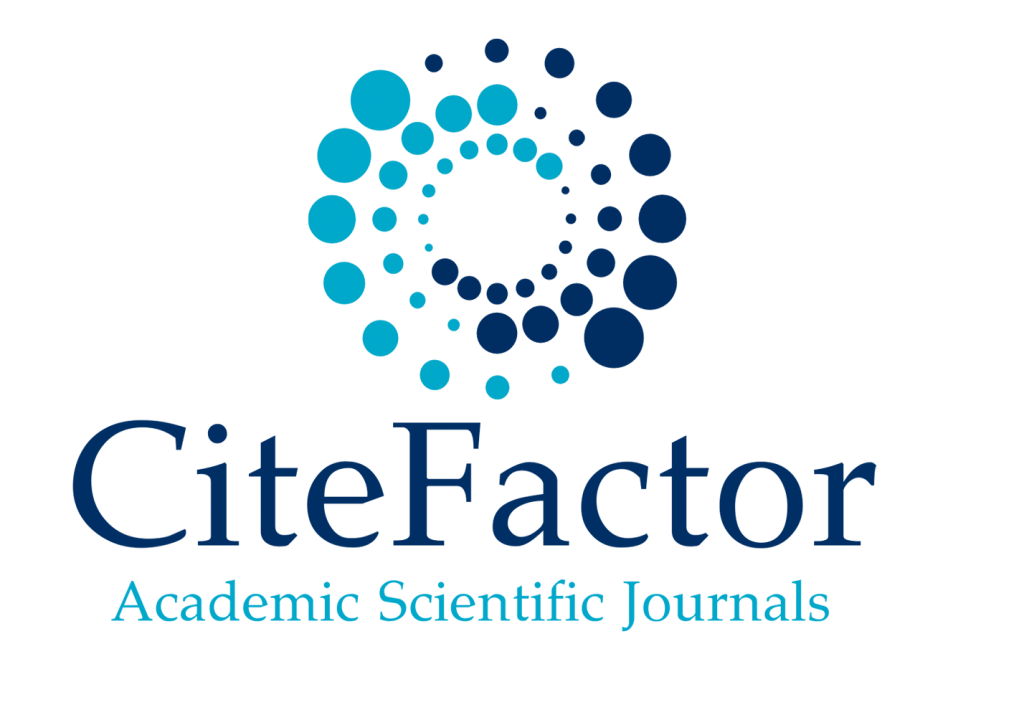Tourism Digitalization Development Strategy in the Tourism Village of Tanjung Ratu Karang Panjang Rebo Indah (DEWI TARI) Bangka District
1Hermawan Saputra, 2Devi Valeriani, 3Hamsani Hamsani
1Master of Management Program, Bangka Belitung University, Bangka, Indonesia
2Faculty of Economics and Business, Bangka Belitung University, Bangka, Indonesia
3Faculty of Economics and Business, Bangka Belitung University, Bangka,
https://doi.org/10.47191/jefms/v8-i4-24
ABSTRACT:
This study aims to formulate a tourism digitalization development strategy in Tanjung Ratu Karang Panjang Rebo Indah Tourism Village (DEWI TARI), Bangka Regency. Digitalization in the tourism sector is an important factor to improve information accessibility, attract tourists, and support local economic growth. This research method uses a qualitative approach with SWOT analysis, GAP analysis, and litmus test. SWOT analysis was used to identify strengths, weaknesses, opportunities, and threats in the digitization process. GAP analysis helps measure the gap between the current condition and the ideal condition expected in the implementation of digitalization. A litmus test was applied to test the feasibility of the proposed strategy in terms of social, economic, and environmental aspects. Data were collected through interviews, observations, and documentation studies related to tourism activities and digital infrastructure at DEWI TARI. The results showed that the development of digitalization has great potential in improving the quality of tourism services and attractions, but challenges such as limited human resources and technological infrastructure need to be overcome. The proposed strategies include optimizing digital promotion, increasing community digital literacy, and strengthening collaboration with the government and private sector. The findings are expected to guide stakeholders in developing sustainable and inclusive digital-based tourism in DEWI TARI.
KEYWORDS:
Digitalization, Tourism Village, SWOT Analysis
REFERENCES:
1) Adikampana. (2017). Community-based Tourism. Cakra Press: Bali
2) Aditya, et. al. (2016). Exploration Study of Spiritual Tourism in Ubud Tourism Center, Gianyar (Case Study at Ubud Bodywork Center and Yoga Barn). IPTA Journal, Vol.4 (1).
3) Amin, M., Idrus, Y., Puturuhu, D., & Said Perintah, S. (2023). The Effect of Tourism Object Development and Tourist Visit Levels on Community Economic Growth. Journal of Business Application, 2(1), 16-29. https://doi.org/I https://doi.org/10. 51135/jba.v1.i1.p1-10
4) Antara & Sukma. (2015) Guide to Tourism Village Management based on Local Potential. Bali: Udayana University
5) Arida & Punjani. (2017). Study on the Preparation of Tourism Village Criteria as a Basic Instrument for Tourism Village Development. Journal of Tourism Analysis, Vol.17 (1)
6) Ariesta & Widiantara. (2020). Identification of Legal Aspects in Village Development (Case Study in Badung Regency Bali). Journal of Hotel Service Management, Vol. 4 (1).
7) Astuti & Ratnawati. (2021). SWOT Analysis in Determining Marketing Strategy (Case Study at the Magelang City Post Office 56100). Journal of Management Science, Vol.17 (2)
8) Caesaria. (2022). Efforts to Improve Digital Tourism to Face the 2023 Recession. Downloaded via http://unair.ac.id/upaya-meningkatkan-pariwisata-digital-untuk-menghadapi-resesi-2023 on March 7, 2024
9) Darman & Arisandy. (2018). Geographical Information System for Marine Tourism at the Ternate City Tourism Office. Journal of Computer and Information Science, Vol. 1 (2).
10) Darsana, I. M., & Sudjana, I. M. (2022). A Literature Study of Indonesian Tourism Human Resources Development in the Era of Society 5. 0. Al-Ishlah: Journal of Education, 14(3), 2691-2700. https://doi.org/10.35445/alishlah.v14i1.2014
11) Fafurida, F., Purwaningsih, Y., Mulyanto, M., & Suryanto, S. (2023). Tourism Village Development: Measuring the Effectiveness of the Success of Village Development. Economies, 11(133), 1-15. https://doi.org/https://doi.org/ 10.3390/economies11050133
12) Fariz & Rima. (2014). Concept of Tourism Village Area Development in Bandungan Village, Pakong District, Pamekasan Regency, POMITS Engineering Journal, Vol. 3 (2).
13) Word. (2017). Strategies for Developing Tourism Villages. Proceedings of the National Seminar on Multi-disciplinary Science & Call for Papers
14) Fitriansyah, H., Andesita, N., Zulkia, D. R., Penanggulangan, B., & Daerah, B. (2023). Level of Tourist Satisfaction with Tourism Facilities at Matras Beach, Bangka Regency. Journal of Hospitality and Tourism Management, 6(2), 461-467. https://doi.org/https://doi.org/10.23887/jmpp.v6i2.64350
15) Hadiwijoyo. (2012). Community-based Rural Tourism Planning. Yogyakarta: Graha Ilmu
16) Hastuti, et., al. 2021. Development Strategy of Tourism Village Digitalization: Case Study of Jatiluwuh Village, Tahanan Regency, Bali Province. Journal of Economic Education, Vol. 12 (2)
17) Hastuti, P. T., Shinta, J. A., Khamidayati, S., Pramayuda, K., & Kharisma, B. (2023). Development Strategy of Tourism Village Digitalization: Case Study of Jatiluwuh Village, Tabanan Regency, Bali Province. Cakrawarti Scientific Journal, 6(2), 1-32. https://doi.org/https://doi.org/10.47532/jic.v6i2.841
18) Herdiana. (2019). The Role of the Community in the Development of Community-based Tourism Villages. Journal of Tourism Masters, Vol. 6 (1)
19) Herlianti, E. V., & Sanjaya, R. B. (2022). The Positive Impact of Tourism on Culture, Economy, and Environment in Kasepuhan Cipta Mulya. Critical, 31(2), 132-149. https://doi.org/10.24246/kritis.v31i2p132-149
20) Ibrahim, I., Zukhri, N., & Rendy, R. (2020). From Economics to Political Economy: Half-Hearted Transformation of Ecotourism Sector in Bangka Belitung. Journal of Political Discourse, 5(2), 174- 184. https://doi.org/https://doi.org/10.24198/jwp.v5i2.30631
21) Rangkuti. (2016). SWOT Analysis Business Case Distinguishing Technique. Jakarta: PT Gramedia
22) Ratnaningsih & Mahagangga. (2013). Local Community Participation in Tourism (Case Study in Wisaa Belimbing Village, Tabanan, Bali). Journal of Tourism Destinations, Vol. 3 (1).
23) Jaenuddin, M. T. (2019). Efforts to Increase Regional Original Revenue through Tourism Development in Mamuju Regency. 12(2), 67-71.
24) Jian, X., & Afshan, S. (2023). Dynamic Effect of Green Financing and Green Technology Innovation on Carbon Neutrality in G10 Countries: Fresh Insights from CS-ARDL Approach. Economic Research- Ekonomska Istraživanja, 36(2), 1-18. https://doi.org/10.1080/1331677X.2022.2130389
25) Ministry of Tourism and Creative Economy. (2021). Digital Tourism Strategy in Attracting Tourists. Downloaded from http:/kemenparekraf.go.id/ragam-tourism/Strategy-Digital-Tourism-in-Encouraging- Tourists on March 7, 2024.
26) Megawandi, Y. (2020). Tourism Development in Bangka Belitung Islands Province in a Whole of Government Approach. Jurnal Widyaiswara Indonesia, 1(2), 108-119. https://doi.org/https://doi.org/10.24912/je.v24i2.566
27) Martitah, et. al. (2023. Development of Tourism Villages in Wonogiri Regency based on Local Wisdom. Journal of Law Service, Vol.5 (2)
28) Moslehpour, M., Firman, A., Hsien, C., İsmail, L., Trung, B., & Tran, K. (2023). The Moderating Impact of Government Support on the Relationship between Tourism Development and Growth, Natural Resources Depletion, Sociocultural Degradation, Economic Environment, and Pollution Reduction: The Case of Indonesian Economy. Environmental Science and Pollution Research, 30, 56863-56878. https://doi.org/10.1007/s11356-023-26231-x
29) Muchsam, et., al. (2011). Application of Gap Analysis in the Development of Employee Performance Assessment Decision Support System (Case Study of PT XYZ). Journal of Innovation and Entrepreneurship.
30) Mukhtar. (2015). Basic Qualitative Research. Bandung: Gelar Pustaka Mandiri.
31) Mumtaz & Karmilah. 2021. Digitalization in Tourism Village. Journal of Space Studies, Vol.1(1)
32) Neneng. (2017). Preservation of Rare Collection Information: Digitization, Restoration, Fumigation. Yogyakarta: Library Bulletin
33) Nugroho. (2020). Some Problems in the Development of the Tourism Sector in Indonesia. Tourism, 7(2), 124-131. https://doi.org/https://doi.org/10.31294/par.v7i2.8810
34) Nurhayati, et.al (2023). The Use of SWOT Analysis and Litmus Test in Determining Capital Management Strategies to Increase Production of MSMEs Ina Konveksi, Vol. 15 (1)
35) Palimbunga, 2018. Community Involvement in Tourism Development in Tabalansu Tourism Village, Papua. Journal of Tourism Master, Vol.5(1)
36) Putu, et. al. (2022). Management of Pengeliputan Tourism Village with the Concept of Green Economy Based on Local Communities in the Era of the Covid-19 Pandemic. Journal of Applied Management and Accounting Science, Vol. 3 (2).
37) Rahmani, Z., Valeriani, D., Fitriyanti, E., Wulandari, A., Afdal, M. S., & Putra, R. A. (2023). Strengthening the Village Economy through the Application of Sharia Economic Concepts in Kayu Besi Village, Puding Besar District, Bangka Regency. Abdi Insani Journal, 10(3), 1536-1542. https://doi.org/https://doi.org/10.29303/abdiinsani.v10i3.1063
38) Sanjaya. (2018). Community-based Tourism Development Strategy in Kemetul Village, Semarang Regency. Journal of Tourism Master, Vol.5 (1)
39) Sastrayuda. (2010). Concept Resort and Leisure, Development Strategy and Management of Resort and Leisure. University of Education Indonesia; Bandung
40) Sudibya. (2018). Village Tourism and Tourism Village. Journal of BAPPEDA LITBANG, Vol1(1)
41) Sugiama, A. G., Oktavia, H. C., & Karlina, M. (2022). The Effect of Tourism Infrastructure Asset Quality on Tourist Satisfaction: A Case on Forest Tourism in Tasikmalaya Regency. International Journal of Applied Sciences in Tourism and Events, 6(1),65-71. https://doi.org/https://doi.org/10.31940/ijaste.v6i1.65-71
42) Sugiyono. (2021). Quantitative Qualitative Research Methods and R and D. Bandung: Alfabeta
43) Suherlan, et. al. (2020). Strategic Partnership between Stakeholders in the Development of Gubugklakah Tourism Village, Malang Regency, East Java. Journal of Applied Tourism, Vol.4 (1)
44) Sunarjaya, I. G., Antara, M. A., & Prasiasa, D. P. O. (2018). Obstacles to the Development of Munggu Tourism Village, Mengwi District, Badung. JUMPA, 4(2), 215-227.
45) Sofar & Widiyono. (2013). Social Research Methodology for Thesis and Thesis Writing. Jakarta: In Media
46) Suprobowati, D., Sugiharto, M., & Miskan, M. (2022). Development Strategy of Creative Tourism Village Based on Hendrosari Gresik Local Wisdom Community. Scientific Journal of Public Management and Social Policy, 6(1),53-68. https://doi.org/https://doi.org/10.25139/jmnegara.v6i1.4551
47) Suryadana and Octavia. (2015). Introduction to Tourism Marketing. Bandung: Alfabeta
48) Syahbudin, S., Effendy, K., & Kusworo, K. (2021). Tourism Development Strategy in order to Increase Regional Original Revenue in Bangka Regency. Journal of Social Science and Education (JISIP), 5(3), 611-622. https://doi.org/10.36312/jisip.v5i3.2238
49) Tamaela, E. Y., Pattiasina, V., Dasinapa, M. B., Marani, Y., & Ari, J. (2020). Regional Financial Monitoring Models with Community Participation and Public Policy Transparency as Moderators. 24(02), 3-5. https://doi.org/10.37200/IJPR/V24I2/PR200745
50) Theresia. (2023). Analysis of Tourist Activities when Visiting Beaches in the Special Region of Yogyakarta. Scientific Journal of Tourism, Vo.17(3).
51) Triyono. (2023). Implementation of the 4A Method through the Development of Bangsring Banyuwangi Beach Tourism Destination. Journal of Social Sciences and Humanities, Vol. 6 (2).
52) Valeriani, D. (2019). Comparative Tourism Development between Regions in Bangka Belitung Islands Province. Journal of Economics, 24(2), 159. https://doi.org/10.24912/je.v24i2.566
53) Wahyu, et.,al. 2021. Strategic Planning for Developing the Potential of Cemoro Village as a Tourism Village Based on Community and Culture. Journal of State Administration, Vol.9 (2).
54) Wilopo & Hakim. (2017). Cultural Tourism Destination Development Strategy (Case Study on the Trowulan Site Area as a Leading Cultural Tourism in Mojokerto Regency.
55) Yanuar, D., & Putra, G. B. (2021). Tourism Management System in the Bangka using Information Technology. Serambi Engineering, 6(1), 1508-1515. https://doi.org/https://doi.org/10.32672/jse.v6i1.2596
56) Yasya & Nurhaliza (2021). Digitalization of Hijrah through Virtual Communities. Journal of Education and Development, Vol.9(3).
57) Yuliardi. (2021). Identification of the Feasibility of Nature Tourism Objects with the 4A Approach (Attraction, Amenity, Accesibility, and Ancilliary). Journal of Architecture, Vol.1(2)
















